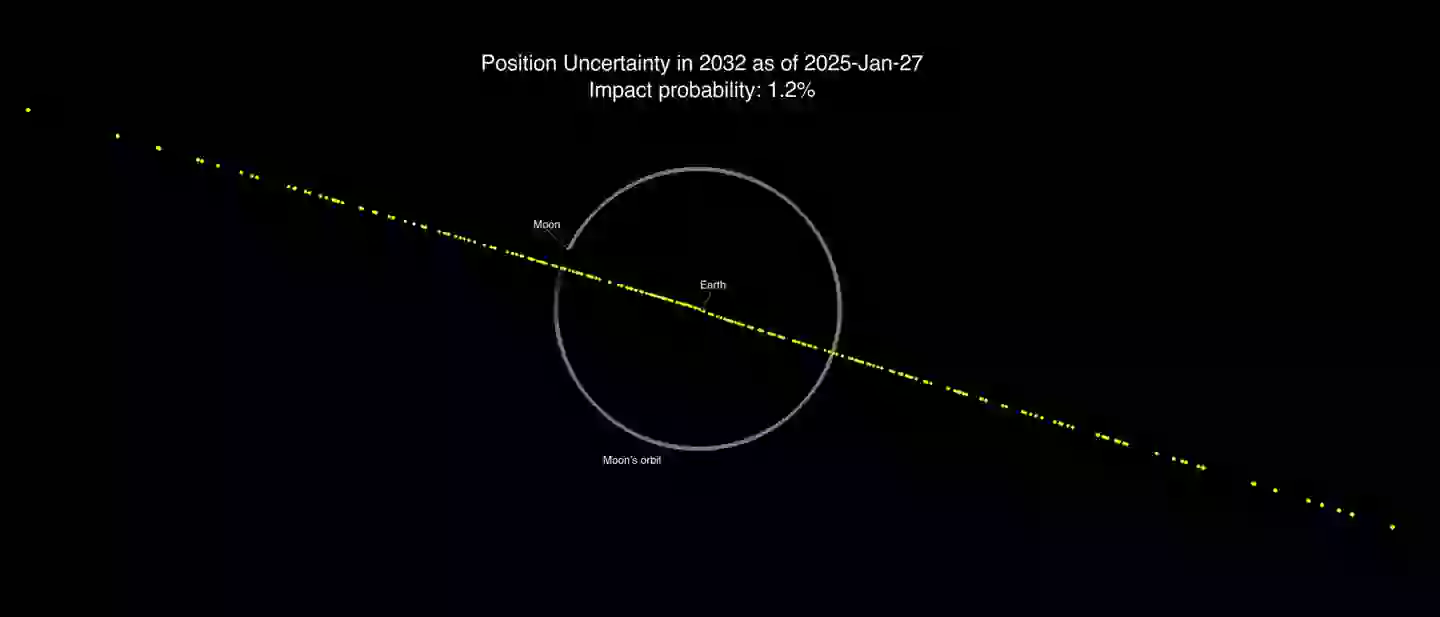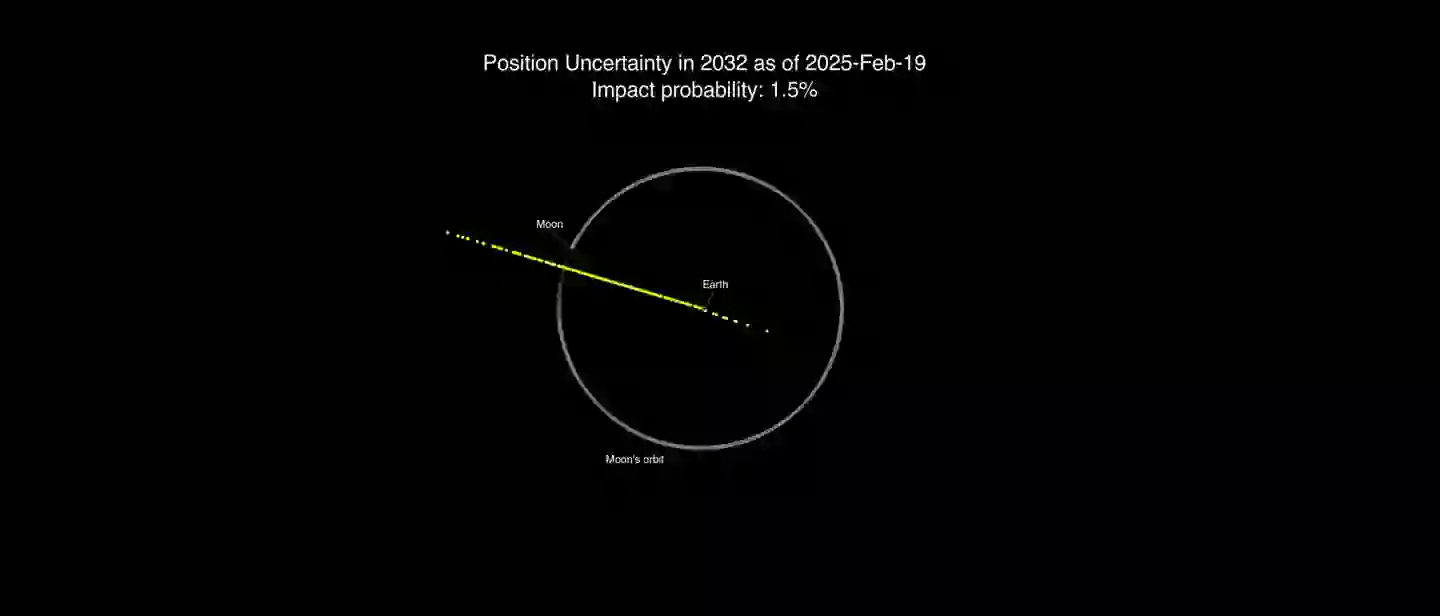
NASA has issued a fresh statement on the potential 'city killer' asteroid known as 2024 YR4 with the odds of it hitting planet Earth increased this week.
Alongside this, the American space agency has released new images of how experts are tracking the cosmic rock as it floats away from our planet before looping around the Sun and heading back our way in the early 2030s.
Discovered by the Asteroid Terrestrial-impact Last Alert System (ATLAS) days after Christmas late last year, it saw the world's leading telescopes turn their attention to studying the asteroid with the United Nations even starting the process of planning around a potential disaster situation.
Advert
And it's going to continue being tracked throughout 2025 by the incredibly powerful James Webb Space Telescope. That's because the asteroid was tracked and given a chance of hitting Earth; albeit a small one.

Asteroid collision is more likely than before - until it's not
This week, NASA upgraded the chances of the asteroid hitting Earth for the second time in a matter of weeks.
Originally, 2024 YR4 was given just a 1.2 percent possibility of colliding with our planet. This was then increased to 2.3 percent, causing headlines around the world.
Advert
Well, they upped it once more this week, with the collision odds sitting at 3.1 percent. That is a one in 32 chance, which sounds far too likely for my anxiety levels.
But just one day after this, it was reduced to 1.5 percent.
NASA explains: 'NASA’s Center for Near-Earth Object Studies at the agency’s Jet Propulsion Laboratory in Southern California has incorporated the new observations reported to the Minor Planet Center and on 18 February, updated the impact probability of asteroid 2024 YR4 in 2032 to 3.1 percent.
"This is the highest impact probability NASA has ever recorded for an object of this size or larger. However, on Wednesday, 19 February, new data collected overnight reduced the impact probability to 1.5 percent."

What happens going forward?
NASA says that 'every additional night of observations improves our understanding of where the asteroid could be' when it heads back to Earth in seven years time on 22 December, 2032.
Advert
As for the future, the space agency says it 'underlines the importance of gathering enough data so that our planetary defense experts can determine future risk to the Earth'. The coming days and weeks will provide further insight in to the impact probability.
Where could the asteroid land on Earth?
David Rankin, an engineer at the NASA-funded Catalina Sky Survey Project, told Space.com that the 'risk corridor' runs through South America, sub-Saharan Africa, the Indian subcontinent and through to Asia.
If it did hit, the path where it could land goes over a number of cities including the Colombian capital of Bogotá, Côte d'Ivoire city Abidjan, and the Nigerian city of Lagos where 21 million people live.
Also on the potential collision path is the Sudanese capital of Khartoum, the Indian cities of Mumbai, Kolkata and the Bangladeshi capital Dhaka.
Topics: Environment, NASA, Science, Space, US News, World News, 2024 YR4